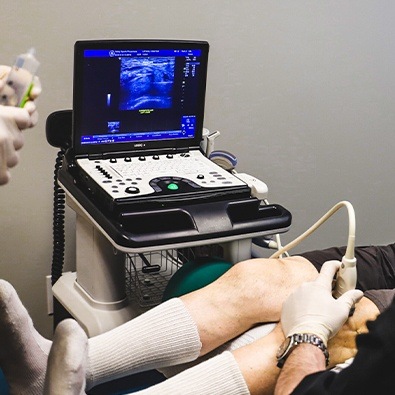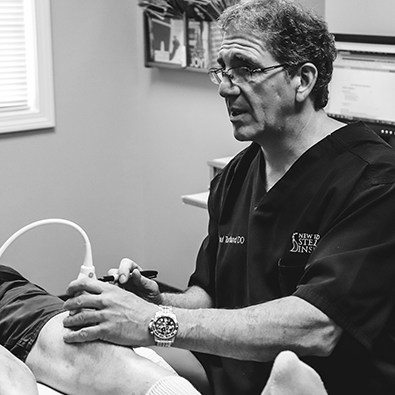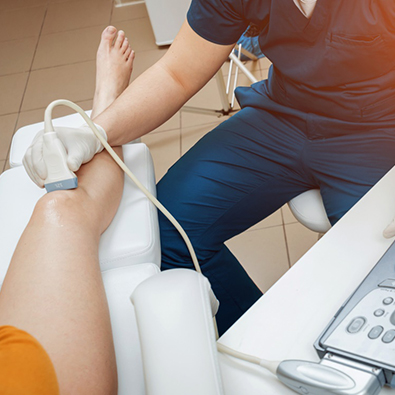
Fax: (860) 430-9693
Glastonbury, CT 06033

Wouldn't it be great if you could walk into your doctor's office, point with your finger and say, "It hurts right here," and the doctor could look inside and see exactly what the problem is? That's the reality of diagnostic musculoskeletal ultrasound! Ultrasound allows us to look under the skin and see damage to tendons, muscles, ligaments, and nerves - right there in the exam room! And unlike X-rays, MRIs, and CT scans, with diagnositc ultrasound in Glastonbury, CT, we can watch what happens during movement, because sometimes you can only see a problem during motion.

At Valley Sports Physicians & Orthopedic Medicine we're experts in diagnostic musculoskeletal ultrasound (MSK US). In fact, we teach other physicians around the country how to use ultrasound!
Ultrasound doesn't replace x-rays or MRIs. Each type of test serves a special role. For example, x-rays are best at looking at bones. MRIs are great for looking inside joints at cartilage. Ultrasound excels at looking at the soft tissues outside the joint, including muscles, tendons, ligaments, and nerves.

The challenge with ultrasound is that it takes a long time to get good at it! Many physicians take one or two weekend courses to learn MSK US. But to really excel at it takes years of training and practice. At Valley Sports Physicians & Orthopedic Medicine we've been doing MSK US since 2008 and teaching it since 2009. Few practices in the country have our level of skill and experience.

If you are dealing with aches and pains, we invite you to book an appointment with our practice. We can use diagnostic musculoskeletal ultrasound (MSK US) to perform a noninvasive exam that can be an important first step on your path to a healthier body. Before you commit to anything, though, you may be eager to learn more about MSK US and its value. To help you out, we have put together a list of answers to some FAQs about this service. If your questions are not addressed here, give us a call. We look forward to speaking with you!
MSK US is a noninvasive and painless procedure. Ultrasound works by emitting high-frequency sound waves, which bounce off the structures in your body in a way that allows us to see what is happening under your skin.
During the procedure, we apply a gel to your skin that will help to transmit the ultrasound waves. Then, we use a device called a transducer to emit the waves. As we gently move the transducer, we will be able to get an in-depth view of the soft tissues in the targeted area.
There are no known risks of diagnostic ultrasound, so you can be confident that you will be safe during your appointment. However, there are some limitations to this service. Sound waves do not travel well through air or bone, so ultrasound is fairly useless for a few parts of the body, such as the head and lungs. It also may not be able to see deep into your tissues.
MSK US offers a number of impressive benefits, including:
For some types of ultrasound procedures, such as those used to monitor pregnancy or examine the pelvic organs, it is necessary to drink a significant amount of water prior to the appointment. This helps the sound waves to transmit properly so your medical team can get accurate images.
When the ultrasound is for musculoskeletal structures, though, drinking water is not that important. Our team will let you know if you need to do anything special to prepare for your exam.